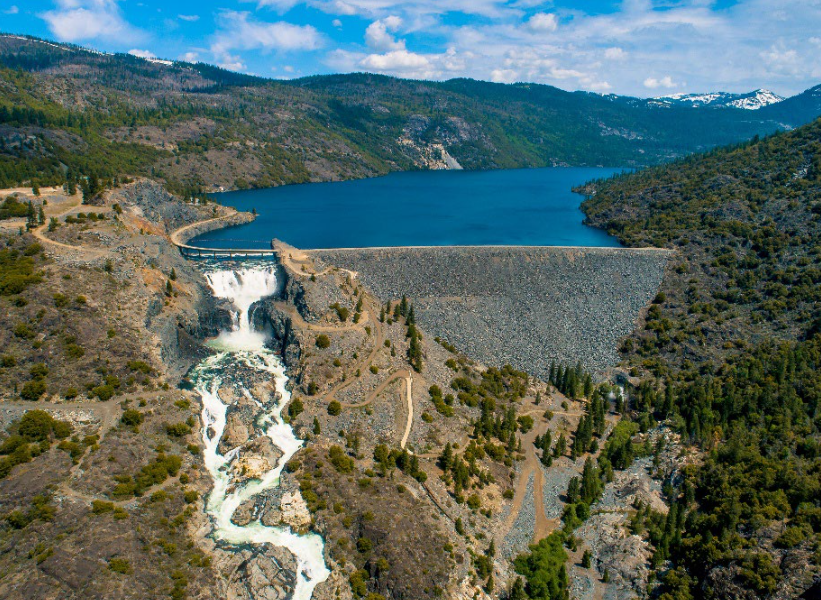Hyperbole Sells, Apparently
In 2023, Hell Hole Reservoir spilled uncontrolled as water exceeded the spillway’s fixed elevation. Credit: Placer County Water Agency
A little-noticed item appeared in a local newspaper recently. The Placer Sentinal ran a story based on a press release from the Placer County Water Agency (PCWA)(1) announcing the construction of some operable gates on top of what is now just a pour-over spillway at PCWA’s Hell Hole Dam on the Middle Fork of the American River(2).
The story did not go viral, perhaps because the dam’s name seems like something from an April Fool’s joke. Yet the dam is real, and the spillway gates are part of the recent carefully negotiated hydropower permitting process called “relicensing.”
Less noticed was the common but maddening piece of misinformation adopted in the press release and so dutifully picked up by the uncritical news outlet. The misinformation: the increase in potential storage at a dam is the same as the amount of water reliably available from the new storage (often translated into the number of new houses the new dam project can support).
That just ain’t so. Here’s the dirty little secret: Reservoirs often don’t fill, so engineers know that often the new storage capacity won’t be needed or used (or is paid for by less storage somewhere else).
In engineering, the water “benefits” of new storage are compared as a rough “storage to yield” ratio, a ratio itself susceptible to careful probing as to its assumptions. Since the construction of 1,300 significant dams in California, new construction has generally assumed (before any more detailed calculations were made) approximately 7 to 1.
That means that Hell Hole’s 7,600 acre-feet of new storage might be expected to result in roughly 1,100 acre-feet of new water from the existing 208,400 but soon to be 216,000-acre-foot Hell Hole Reservoir. The Public Relations departments of the dam builders, though, aren’t prepared to put out press releases that slash the purported benefits of their dam projects by six sevenths, or 85.7%.
Of course, that seven to one ratio is just a rule of thumb. California’s recent big on-stream storage reservoir proposals have not looked that good. The “storage to new deliveries” ratio for Reclamation’s proposed Shasta Reservoir expansion is 12.5 to 1, and Temperance Flat dam would be 18 to 1. Believe me, you won’t find Reclamation’s Public Affairs officers touting those numbers.
PCWA can be more honest from time to time, so if you ask the right person there, you will get a concession that their little reservoir expansion won’t get any water that is reliable enough to build more houses on.
It’s a good lesson, though, if you see press outlets parroting the lines of dam builders that just by building some more space for capturing water that means that they will have more water equivalent to the planned storage expansion, it’s time for a little public education (letters to the editor, counter tweets, or whatever) from the dam-performance modelers and their engineering brethren.
It’s a tough media environment for facts, but in the end, facts should matter.
If they do matter, then perhaps we can all stop looking for President Trump’s giant faucet(3) blocking the Columbia River from its natural course into Southern California(4). That ain’t so either.
Resources
(1) PCWA Press Release RE Hell Hole Expansion
(2) Placer Sentinel: County Water Agency Approves Project to Increase Storage at Hell Hole Reservoir
(3) Headwaters article by Ron Stork on Trump’s imaginary water faucet
(4) Headwaters: Trump Declares War on CA Water

